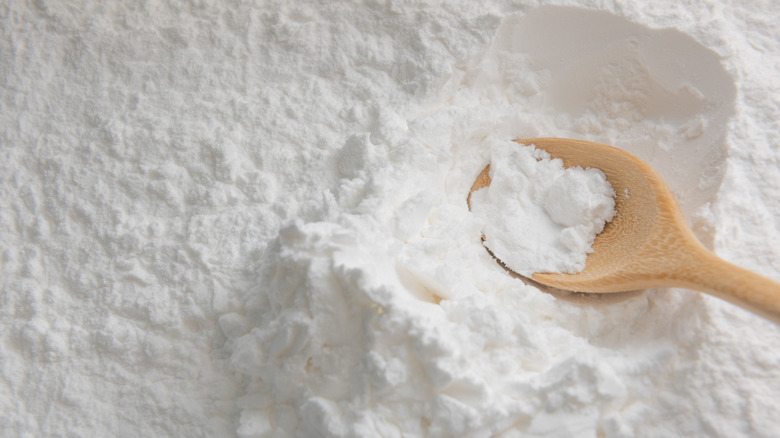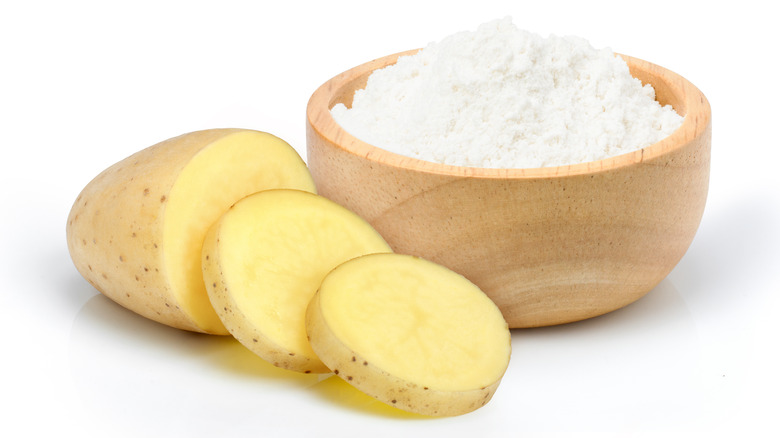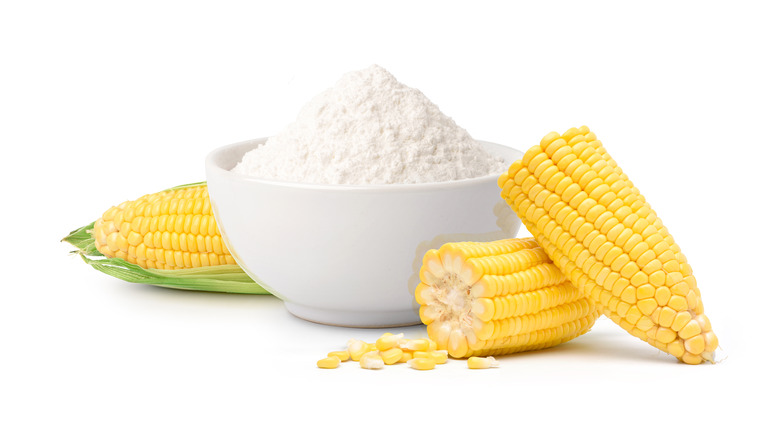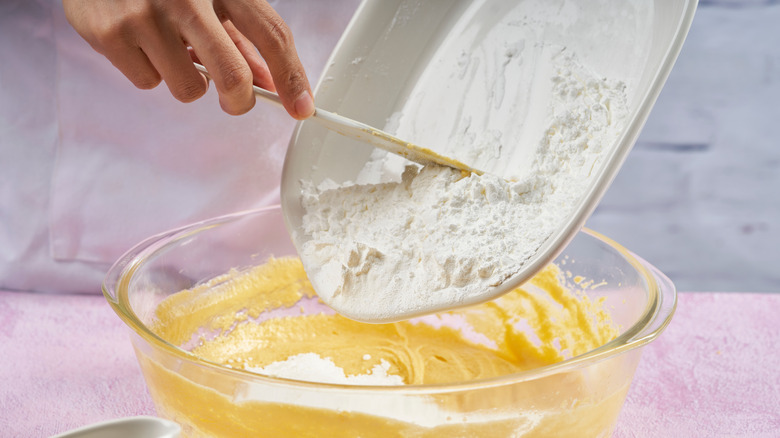Potato Starch Vs. Cornstarch: Is There A Nutritional Difference?
Potatoes and corn are very starchy vegetables, and what does starch like to do? Thicken things. You might have used a cornstarch slurry when thickening an Asian sauce or used potato starch in gluten-free baking to thicken up a pie filling, act as a breading for meat, and more. However, while the two pantry staples can overlap, they are also quite different due to their source.
Whether you're baking with them or cooking up something savory, let's talk about how each of them is made. According to MasterClass, starches are white powders free of odor and taste, deriving from green plants such as potatoes, corn, and wheat. Potato starch is essentially starch extracted from potatoes soaked in warm water, then dehydrated and ground into a powder. Cornstarch is the endosperm, the inner layer of the grain, extracted from the corn kernel through soaking, then dehydrated and ground into a powder.
According to Lacademie, if both starches are stored in airtight containers in a cool, dry place in your house, they will stay good indefinitely.
Nutrition of potato starch
Medical News Today states that potato starch has very little nutritional value, but is also much lower in calories and carbohydrates than many of its equivalents, which is perfect for those trying to maintain or shed weight. Potato starch is also gluten-free, so those avoiding the protein will benefit from using this as their go-to thickener.
Potato starch is best added to a hot dish later in the cooking process due to its intolerance of high heat for long periods. Overheating potato starch can cause it to break down, reducing its ability to thicken. In fact, Healthline states that this is because potato starch has a lower gelatinization temperature and larger granules compared to cornstarch, meaning it thickens quickly. Just remember: potato starch is best at high temperatures for shorter amounts of time.
Nutrition of cornstarch
While we're on the subject, it's worth pointing out that cornstarch thickens best at low temperatures for longer, unlike potato starch. High heat exposure causes cornstarch granules to clump together, according to Bon Appétit.
Very Well Fit states that a single tablespoon of cornstarch contains about 30 calories, 7 grams of carbohydrates, and zero grams of sugar, fiber, fat, sodium, and protein. While its nutritional value is relatively minimal, there are studies that suggest cornstarch can aid those with hypoglycemia and dysphagia, because it has a low glycemic index and is digested more slowly than comparable starches. MasterClass echoes this point, elaborating that the body can break cornstartch down into simple sugars after ingestion much quicker, resulting in a rapid release of insulin. Other common pure starches are white rice, dextrose, and instant mashed potato flakes.
Are they interchangeable?
Potato starch and cornstarch can be interchangeable, depending on how you're using them. If a soup recipe calls for cornstarch, and instructs to add it early into the cooking process, it's here that you use your best judgment and wait when substituting in potato starch. Because potato starch cannot withstand heat as long as cornstarch can, you should add it later than usual. That being said, Bob's Red Mill suggests not using potato starch in place of cornstarch in a pasta sauce, as pasta sauce needs a longer simmer time to achieve the right consistency. Furthermore, it's important to take the acidity and sugar content in a dish into consideration, as cornstarch may not be the best thickener in those environments. Some examples might include tomatoes, canned fruit, juices, and vinegar — potato starch would be a better alternative. Cornstarch thrives in dairy-based recipes.
Lastly, if you're whipping up a dish that you plan to freeze, try swapping in potato starch, as cornstarch does not freeze well and gives the dish a spongy texture once thawed. Some dishes that potato starch and cornstarch go hand-in-hand with are pie fillings and soups, and when knowing the two starch's different characteristics, it's easy to go with your gut on which one works best in which dish.



